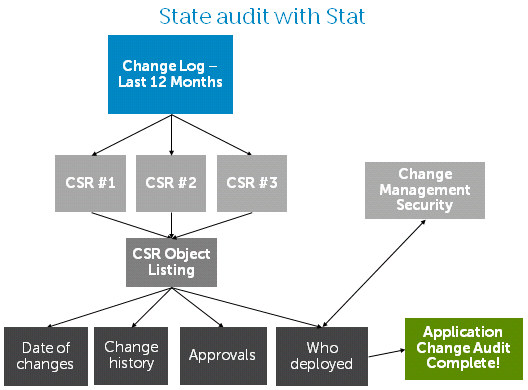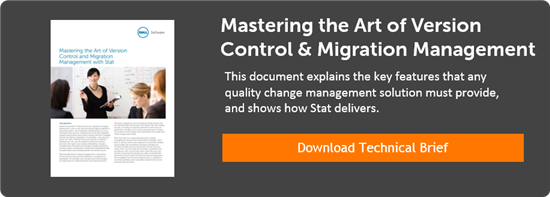
How much of change management, version control and migration management is art, and how much is science?
I worked for an IT director who had been through dozens of audits and migrations. He used to talk about “the Art and Science of IT.”
“If it was predictable and you were prepared for it, then it’s science,” he would say. “If not, then it’s art.”
That confused me at first, but it makes more sense to me as time goes on.
Art in Change Management
Here are a few of the unpredictable factors in change management that make it seem like an art:
- Auditors are suspicious by nature. They’re paid to be suspicious, usually by people who are too shy and polite to be that suspicious.
- You never know what auditors are going to ask you for. They take professional pleasure in springing the unpredictable on you. If you show them a report of 300 change/service requests (CSRs), there’s no telling how many they’ll want to examine, let alone which ones.
- You’re guilty until you can prove you’re innocent. What are auditors trained to assume? That people in your organization have made unauthorized, undocumented changes to your enterprise systems. Maybe they have and maybe they haven’t, but it’s up to you to produce the authorization and documentation for every change.
- Time is not on your side in an audit. The longer you fumble and rummage to demonstrate that your changes were properly authorized, the less confidence you instill in your change management process and the greater the likelihood that the auditors will smell blood in the water.
So as cool as art may be in the evenings and on weekends, you really want more science when your job involves change management, version control and migration management.
Science in Change Management
The best way to replace your change management art with change management science is to leave as little as possible up to chance. Richard Kosiba, PeopleSoft sysadmin at the University of Texas Health Science Center at Houston, found that out.
Here are a few of the ways in which Richard used Stat to show that he was prepared for state audits of the Center’s financial and HR systems (see the diagram above):
- Change log – Richard has access to a log of all changes to his PeopleSoft and enterprise systems during the last 12 months, including version control and migration details.
- CSR list – Richard runs a report and gives the auditors a list of CSRs, from which they pick a handful of CSRs at random.
- CSR object listing – The auditors spot-check the CSRs and request data on each one, like date/time stamps, objects, packages, what happened, who did it, who approved it and when. Richard is able to drill down multiple levels into the CSRs and quickly demonstrate that they are properly documented.
- Security information – Showing their healthy suspicion, the auditors ask to see details that will convince them that the documentation is legitimate and that nobody has made unauthorized changes in PeopleSoft. Richard provides security reports and, to convince the auditors definitively, he also provides screenshots.
- Testing reports – Auditors want to see that approved changes were first tested then deployed to production. Richard runs testing reports from Stat.
Does Richard miss the art of change management? Science is better, he thinks.
Instead of losing a week of productivity while sitting with auditors, he sets up a conference call with screen sharing and goes through the audit in about three hours. Also, the auditors prefer science: Richard can more efficiently show them all the details they need. So much so, in fact, that they know what to ask for from one year to the next and what kinds of reports Richard can provide.
New Tech Brief: “Mastering the Art of Version Control and Migration Management with Stat”
We conducted a webcast with Richard that is a case study on what his state auditors look for and how easily he is able to provide it.
We’ve also put together a tech brief called Mastering the Art of Version Control and Migration Management with Stat. It explains the change management features to look for in software and shows how Stat embodies them. Have a look at the tech brief and start replacing the art in your change management processes with a little more science.



